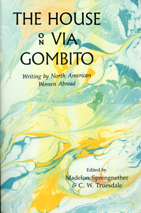Resistance, that powerful guard of the status quo, of the loved prejudice and favored ignorance, stands guard like an upside down angel over our writing.
I’m watching an osprey hover over the surface of a lagoon between the coast of Florida and Sanibel Island. What is sees is impossible to me, yet it recognizes a fish almost within reach. Suddenly its wings lift, and with talons extended it plunges into the lagoon. When the bird emerges, it carries a heavy fish. The capture holds for a few feet, then falls back into the water.
Resistance hovers over something we can’t quite gauge. We resist the air with our wings. Weary, frustrated, soon we must make the plunge. Maybe the catch will be smooth, our resistance spent in the act of retrieving what we know will feed us. Or maybe we will retrieve more than we can manage or possibly nothing more than a shadow and the recognition that we must hover again.
This part of the creative process, of any learning process, we hate the most. It’s not the same as simple fatigue. That we resolve with rest, tilting down over the keyboard or pen, eyes closing, only to wake hours later, surprised at where we find ourselves. Resistance is active, strong-willed, hungry yet defiant. We battle between the element that normally sustains us with our strong wings, and the element we only partly glimpse below.
My own resistance I treat like an ornery guest–with honor yet caution. Small doses of interaction at a time, hoping that eventually, one of us will relax and make the next interchange easier. Take the question of how much to reveal in the mother-daughter memoir I’m currently revising. It’s the early 90s. The difference between what I knew about gay life and what my daughter knew in her first year of college, was considerable. Yes, I’d read memoirs like Mark Doty’s Heaven’s Gate, set largely on Cape Cod as his partner is dying of AIDS. Doty’s tender yet searing chronicle reminded me that watching a beloved die, especially the same age as yourself, rocks hope and sanity to its foundations. At various writers colories, I had made friends with gay writers who treated me with a welcoming kindness, even coddling which I’d never quite experienced from any other man. Better than a brother since we had no sibling rivalry; better than a lover since there was little of that sparring over sexual barriers. Rather more like a distant cousin suddenly dropped into my life offering friendship and gifts of unusual quality.
Yet I had none of the daily intimacy with gays which my daughter developed in her college dorm floor. The first time I passed one of them on her floor, I was shocked with simple astonishment. In my college dorm twenty-some years before, boys were allowed on the dorm floors only on Sunday, and then all doors had to remain open. Instead of gay friends in high school and college (did boys even openly identify themselves as gay?), I acquired some beaux.
Now in her first college year, my daughter desired all the magic of dating, but hadn’t been able to manage. Still as in high school, constrained by shyness and thwarted desire. What to do?
As we traveled I encouraged her to let her beauty (and her beautifying) lead to romance. She resisted with all the newfangled “male gaze” resistance of feminist art-history theory. We deconstructed art–my seeing the drama of beauty and heterosexual desire; she seeing the drama of appropriation and fettering.
All this is in the memoir. It’s the stuff of our art talk and eventual guy talk. Yet she teases me about her deep friendships with gay guys. “Aren’t they getting in the way?” I ask. Or do I? There resistance creeps into my telling of our story. How much of my ignorance, or rather older and less informed perspective of gay-gal friendships belongs in our tale? Should I reveal my own much slower education into gay life and enjoyment of gay friends? Or should I simply cut all the stuff about gays since it only a sidelight of our more crucial themes.
Some readers feel queasy reading about our different experiences and opinions about gay men and straight women. Responding from their 21st-century point of view, when discussion of gay marriage has made it into front-page acceptability, they are made uncomfortable by our earlier, more hesitant responses. Not much, after all, has been written about relationships between gay men and straight women; gay and straight youth. For those on the extremes of the discussion, only interested in gay life OR the opposition to granting gays similar status as heterosexual adults need apply for attention. Only these extremes seem acceptable for mainstream publication.
And so my resistance hovers: how much to plunge into the manuscript and remove? How much to leave just below the surface? As I tire of this uncertainty, I will eventually attempt something. Meanwhile, from a distance, I watch the beauty of the osprey and try not to feel the weariness in its wings.


Leave a Reply